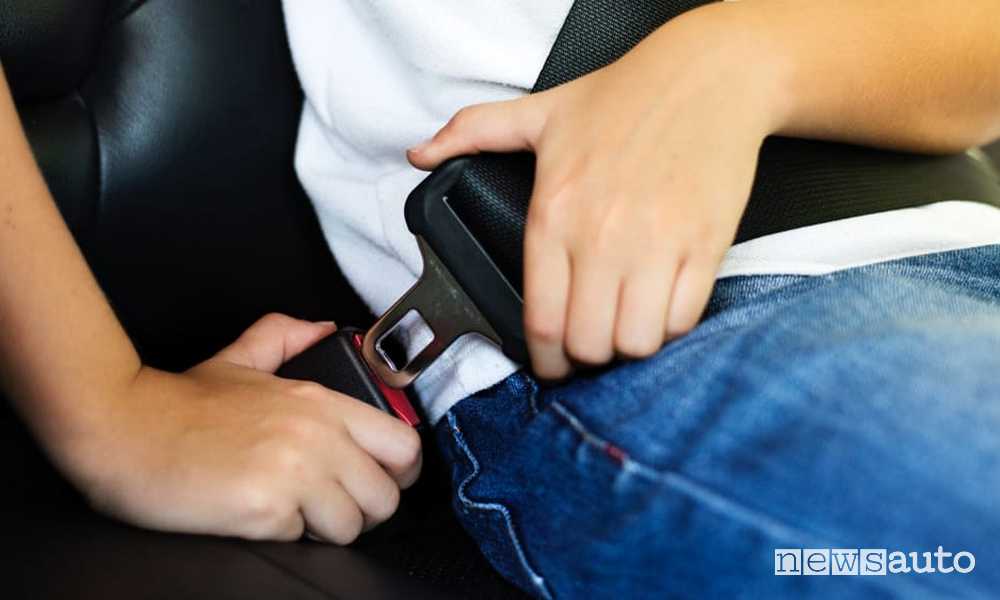Seat belts are passive devices which protect the driver and passengers during crashes road accidents or sudden braking, reducing the risk of serious injury or death. They hold the passengers' body to the seat, avoiding sudden movements and impacts. It is the driver's responsibility to regularly check the condition and functioning of the seat belts, which must be approved to ensure their life-saving effectiveness. Seat belts are among the mandatory equipment.
What the Highway Code says
L'article 172 of the Highway Code establishes the obligation to use the seat belts for the driver and passengers of vehicles of the categories L6e, M1, N1, N2 and N3 equipped with belts. This obligation was introduced in 1989 and subsequently extended to all types of vehicles and all passengers. Violation of this obligation leads to fines from 83 to 332 euros and loss of points on the driver's license, from a minimum of 15 days to a maximum of 60 days.
The obligation to use them
Article 172 of the Highway Code establishes the obligation to use seat belts in vehicles equipped with them, including those of the categories L6e, M1, N1, N2 and N3. This legislation came into force in 1989, initially for cars and only for the driver and front passenger. Subsequently, the obligation was extended to all types of vehicles and to all passengers. Violation of this regulation entails sanctions such as fines and the loss of points on the license, especially if the driver does not wear them.
Specifically, article 172 of the Highway Code lists the categories of vehicles in which it is mandatory to use seat belts. These categories include:
- L6e: four-wheel mopeds, or light quadricycles, with an unladen mass equal to or less than 350 kg, a maximum speed of 45 km/h and a maximum displacement of 50 cm3 (or a maximum power of 4 KW in the case of an electric motor).
- M1, M2 and M3: vehicles with four wheels and at least 4 seats, intended for the transport of people.
- N1, N2 and N3: four-wheeled vehicles intended for the transport of goods.
Furthermore, the article establishes that i children less than 1.5 meters tall they must be secured to the seat with a child restraint system (child seats), rather than with seat belts. This system must be adequate and compliant with the weight of the child. In any case, most of the time seat belts are still used for secure the restraint system for children in the seat.
Seat belt fine
In case of failure to use seat belts, an administrative penalty is applied which varies from 83 to 332 euros. If the non-use concerns a minor, the violation is attributed to the driver or, if present, to whoever is responsible for supervising the minor. If the driver commits the same violation twice in two yearscan be suspended from driving for a period of time 15 to 60 days.
Who alters or hinders correct functioning of seat belts must pay a fine from 41 to 167 euros. Furthermore, anyone who markets, imports or produces restraint devices not approved is subject to a varying financial penalty from 866 to 3,464 euros.

As for the deduction of points from the license, the driver who violates this rule loses 5 points and if the violation is committed by a passenger, the driver does not receive this penalty. In any case, the principle remains confirmed that the driver must insist that passengers on board wear seat belts and, if they refuse, the driver is obliged to Don't let them come on board.
Seat belt exemptions
The legislation provides some exemptions from the obligation to use seat belts. The exemptions are mainly linked to emergency, professional or physical-health situations:
- Belonging to police forces and to municipal and provincial police forces during emergency services.
- Drivers and employees of the vehicles fire and health service in emergency cases.
- Drivers of vehicles with specific setups for waste collection and transport and special use vehicles used in environmental hygiene activities in inhabited and industrial areas.
- Belonging to private security services who carry out stocks.
- Driving instructors who accompany aspiring candidates for the pink slip driving licence.
- People with pathologies or physical conditions that make dangerous to use of belts, with medical certification.
- Pregnant women with a gynecologist's certificate certifying particular risks associated with the use of belts.
- Passengers of M2 and M3 vehicles authorized to transport standing passengers and circulating in urban areas.
- Belonging to armed forces during institutional activities in emergency situations.

Read also,
→ Road accidents
→ What to do in case of a road accident
→ Most frequent causes of road accidents
→ BAC limits for driving and sanctions
→ What do you think? Drop by discussions on the FORUM!
#Seat #belts #cars #fines #exemptions